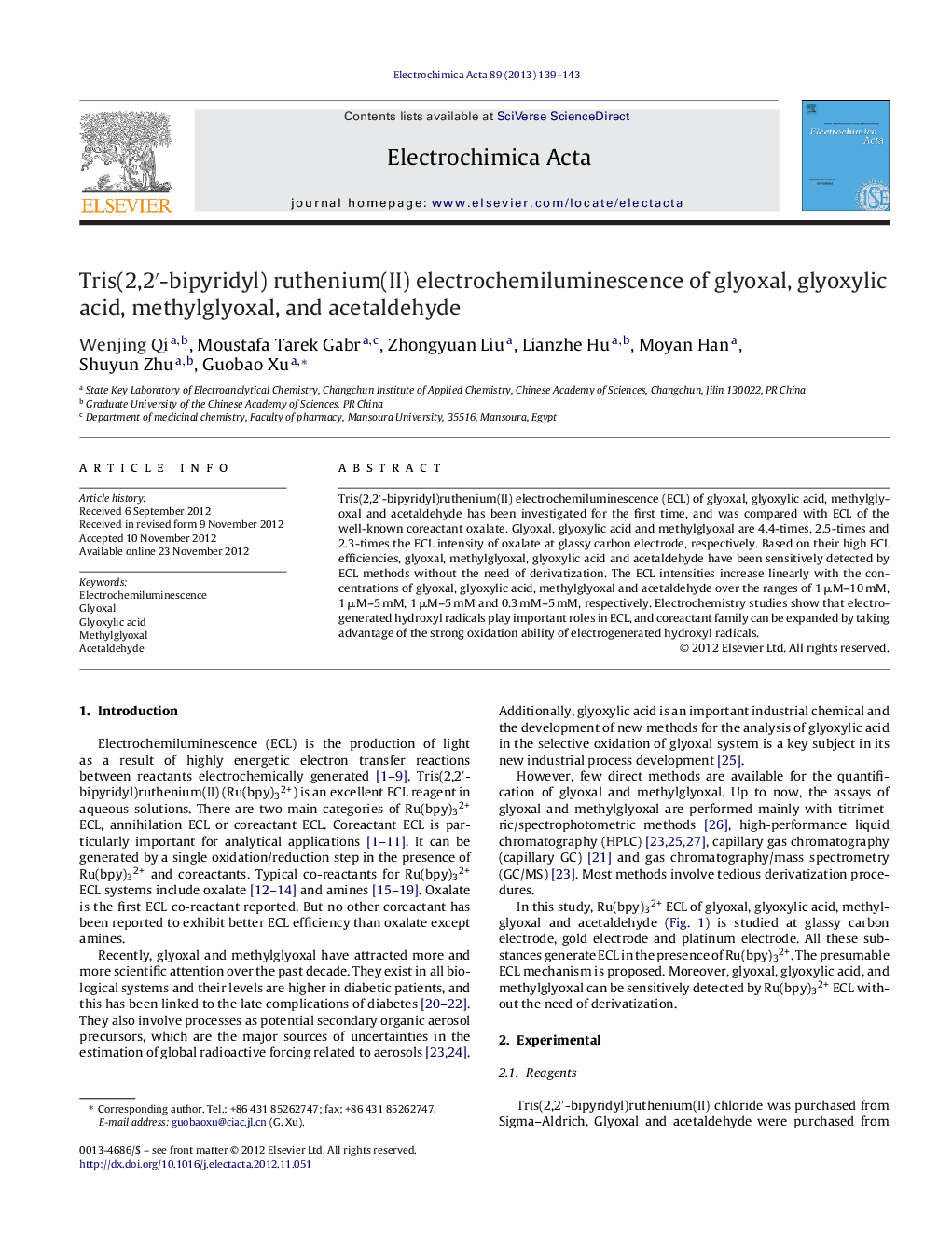| کد مقاله | کد نشریه | سال انتشار | مقاله انگلیسی | نسخه تمام متن |
|---|---|---|---|---|
| 187582 | 459646 | 2013 | 5 صفحه PDF | دانلود رایگان |

Tris(2,2′-bipyridyl)ruthenium(II) electrochemiluminescence (ECL) of glyoxal, glyoxylic acid, methylglyoxal and acetaldehyde has been investigated for the first time, and was compared with ECL of the well-known coreactant oxalate. Glyoxal, glyoxylic acid and methylglyoxal are 4.4-times, 2.5-times and 2.3-times the ECL intensity of oxalate at glassy carbon electrode, respectively. Based on their high ECL efficiencies, glyoxal, methylglyoxal, glyoxylic acid and acetaldehyde have been sensitively detected by ECL methods without the need of derivatization. The ECL intensities increase linearly with the concentrations of glyoxal, glyoxylic acid, methylglyoxal and acetaldehyde over the ranges of 1 μM–10 mM, 1 μM–5 mM, 1 μM–5 mM and 0.3 mM–5 mM, respectively. Electrochemistry studies show that electrogenerated hydroxyl radicals play important roles in ECL, and coreactant family can be expanded by taking advantage of the strong oxidation ability of electrogenerated hydroxyl radicals.
Tris(2,2′-bipyridyl)ruthenium(II) electrochemiluminescence of glyoxal, glyoxylic acid, methylglyoxal and acetaldehyde has been investigated for the first time, and is compared with ECL of the well-known coreactant oxalate.Figure optionsDownload as PowerPoint slideHighlights
► ECL of glyoxal, glyoxylic acid, and methylglyoxal is studied for the first time.
► They exhibit much stronger ECL than well-known coreactant oxalate at GC electrode.
► They are detected with high sensitivity without derivatization.
Journal: Electrochimica Acta - Volume 89, 1 February 2013, Pages 139–143